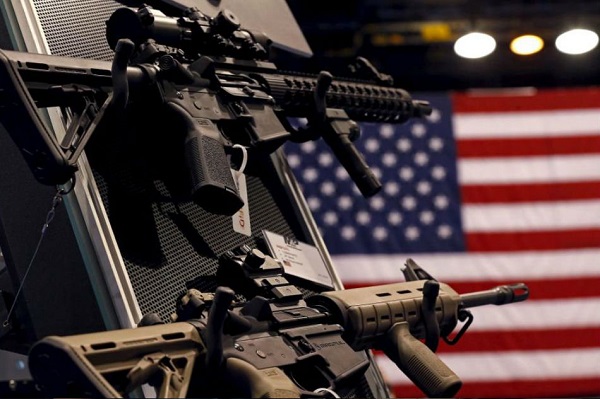US foreign arms sales rise
November 10, 2018 | Expert Insights

US weapons sales to foreign governments rose by 33 per cent this year, reflecting the Trump administration’s efforts to encourage allies into paying more for their own defences.
The looming threats of Iran, China and Russia, alongside efforts to boost domestic arms manufacturers have led to an impressive growth in sales volume for America’s defence companies.
Background
The U.S. Department of Defence’s Foreign Military Sales (FMS) program facilitates sales of U.S. arms, defence equipment, defence services, and military training to foreign governments. The purchaser does not deal directly with the defence contractor; instead, the Defence Security Cooperation Agency serves as an intermediary, usually handling procurement, logistics and delivery and often providing product support, training, and infrastructure construction (such as hangars, runways, utilities, etc.). The Defence Contract Management Agency often accepts FMS equipment on behalf of the US government.
FMS is based on countries being authorized to participate, cases as the mechanism to procure services and a deposit in a US Trust Fund or appropriate credit and approval to fund services.
Analysis
US weapons sales to foreign governments rose by 33 per cent this year, reflecting the Trump administration’s efforts to coerce and cajole allies into paying more for their own defences to counter Iran, China and Russia, alongside efforts to boost domestic arms manufacturers.
Numbers released by the US state department, which authorises big-ticket and high-tech weapons sales, show government-to-government sales rose by nearly $14bn to $55.66bn in the year to October. Such sales are up 80 per cent since October 2016, a month before the presidential election that brought Donald Trump to power.
US officials attributed the growth to concerted pressure by the Trump administration on allies from the EU to South Korea and Japan to pay more for their own defence as part of his “America First” policy.
“As allies increase their own defence budgets, they have more resources to purchase our equipment,” said a state department official, adding that much of the sales growth came from an interest in drones and advanced air and missile systems.
The official said sales to the Gulf, Indo-Pacific and Europe were all strong as a result. The US is pushing arms sales to India and Taiwan as part of its bid to counter China under its “Indo-Pacific” command, which the US renamed this year to emphasise Delhi’s role in containing Beijing.
NATO allies continue to buy large volumes of US weapons to counter Russia, while the Trump administration’s effort to counter Iran has also resulted in a renewed focus on sales to Gulf countries.
Mr Trump has taken a hard stance against Tehran after withdrawing from a 2015 nuclear deal with Iran, claiming the country’s ballistic missile programme threatens neighbours and allies throughout the region. He said he negotiated $110bn in arms deals with Saudi Arabia, due for delivery over 10 years. Congress has approved more than $20bn in Saudi arms sales since 2017.
The state department declined to publish a breakdown of sales to individual countries, but anecdotal reports indicated that a third of sales were destined for Gulf countries. These include $8.1bn worth of combat ships and missile defence systems to Saudi Arabia, $5.1bn on F-18 fighter jets for Kuwait, $2.1bn on F-16 fighter jets for Bahrain and $1.9bn on Apache attack helicopters for UAE.
Direct commercial sales of US weapons — which are privately contracted and tend to comprise lower-tech weaponry, although they also require authorisation from state department — were up 7 per cent, to $136.6bn.
Overall, authorised arms sales including both government and authorised commercial sales rose 13 per cent in the year to October 2018, to $192.3bn.
Assessment
Our assessment is that the US has successfully boosted its own foreign arms sales programs by highlighting looming fears of aggression from China and Russia. It is interesting to note that President Trump had earlier criticised NATO allies for not spending enough and using Washington’s arsenals to defend themselves. We believe that the rise in arms sales is proportionally linked to Russia and China’s growing aggression. We also feel that the US may push other non-partner countries to purchase its expensive F-35 fighter.








Comments